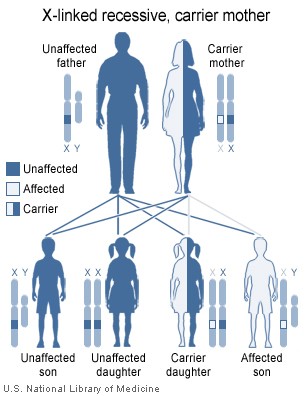Dent's disease pathophysiology
|
Dent's disease Microchapters |
|
Diagnosis |
|---|
|
Treatment |
|
Case Studies |
|
Dent's disease pathophysiology On the Web |
|
American Roentgen Ray Society Images of Dent's disease pathophysiology |
|
Risk calculators and risk factors for Dent's disease pathophysiology |
Editor-In-Chief: C. Michael Gibson, M.S., M.D. [1]
Overview
Pathophysiology
Genetics

Because it is an X-linked recessive disorder, only males are affected with the disease, whereas females are asymptomatic carriers. The males are prone to manifesting symptoms in early adulthood with symptoms of calculi, rickets or even with renal failure in more severe cases.
In humans, gene CLCN5 is located on chromosome Xp11.22 and has a 2238-bp coding sequence that consists of 11 exons that span 25 to 30 kb of genomic DNA and encode a 746 amino acid protein.[1]
CLCN5 belongs to the family of voltage-gated chloride channel genes (CLCN1-CLCN7, and CLCKa and CLCKb) that have approximately 12 transmembrane domains. These chloride channels have an important role in the control of membrane excitability, transepithelial transport, and possibly cell volume.[2]
The mechanisms by which CLC-5 dysfunction results in hypercalciuria and the other features of Dent's disease remain to be elucidated. The identification of additional CLCN5 mutations may help in these studies, and we have pursued such studies in patients with Dent's disease.[3]
References
- ↑ Fisher SE, Black GC, Lloyd SE, Hatchwell E, Wrong O, Thakker RV, Craig IW: Isolation and partial characterization of a chloride channel gene which is expressed in kidney and is a candidate for Dent's disease (an X-linked hereditary nephrolithiasis). Hum Mol Genet3 : 2053-2059,1994
- ↑ Jentsch TJ, Friedrich T, Schriever A, Yamada H: The CLC chloride channel family. Pflügers Arch 437:783 -795, 1999
- ↑ Katsusuke Yamamoto, Characterization of Renal Chloride Channel (CLCN5) Mutations in Dent's Disease, J Am Soc Nephrol 11:1460-1468, 2000